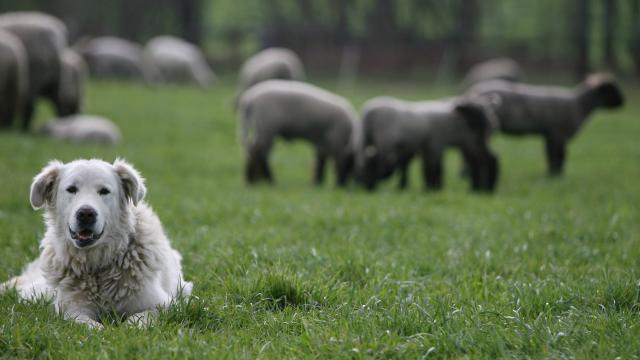The first farmers to arrive in Europe from the Middle East brought their dogs along with them, effectively wiping out the original population of European canines, according to new research.
Starting around 11,000 years ago, Neolithic farmers who had established themselves in the Fertile Crescent of the Middle East — what is now modern day Egypt, Syria, Lebanon, Israel, Jordan and Iraq — began to migrate into Europe.
As they settled new lands, these pioneering farmers brought their domesticated animals with them, such as sheep, goats, pigs and cattle, along with cultivated plants such as wheat barley, peas and lentils.
Less known, however, is whether these farmers brought their dogs, too, or if they simply adopted the indigenous population of European dogs, who had been living on the continent for thousands of years prior to the Neolithic expansion.
As new genetic evidence published this week in Biology Letters indicates, these original European dogs, who lived with Mesolithic hunter-gatherers, gradually disappeared from the continent, replaced by the canines who arrived from the Fertile Crescent alongside their Neolithic masters.
The close connection between humans and dogs, this new research suggests, goes far back into time.
“We love our dogs, and we often use them to define ourselves,” Greg Larson, a co-author of the new paper and a palaeontologist from the University of Oxford, said in a statement. “So perhaps it’s not a surprise that hunter-gatherers in Europe had one kind of dog, and farmers from the [Middle East] had a completely different sort.”
To show this, the researchers conducted a genetic analysis of nearly 100 canine remains uncovered at 37 archaeological sites throughout Europe, from the early Mesolithic to the Bronze Age.
The researchers were seeking to link a specific mitochondrial canine haplogroup to Neolithic farmers, and then determine if, where and when this lineage made its way into Europe. In genetics, a mitochondrial haplogroup can be used to identify and track a specific population that shares a common ancestor along the female line.
Looking at the results, the researchers noticed that, prior to the arrival of Neolithic farmers, all dogs in Europe shared the same genetic lineage, dubbed haplogroup C. After the Neolithic farmers arrived, however, this haplogroup was steadily replaced by a different one, Hg D, or simply haplogroup D, “thus suggesting the introduction of non-indigenous domestic dogs,” the researchers write in their study.
The dissemination of the D haplogroup across time and space is consistent with the gradual spread of Neolithic farmers from the Middle East. Data shows that the Neolithic dogs first emerged in southeast Europe, then to central Europe, and eventually reaching northern and western Europe — a process that took thousands of years (the Neolithic expansion into Europe took place between 9000 and 6000 years ago).
Morgane Ollivier, a co-author of the study at a geneticist at the University of Rennes, said the indigenous population of European dogs were replaced in terms of genetic frequency, and for reasons that aren’t entirely clear.
Why Neolithic dogs should be so much more successful than Mesolithic dogs is a bit of a mystery.
“We don’t know yet but it’s a point to investigate,” Ollivier told Gizmodo. “We would like to target mutations in the nuclear genome that are associated with metabolism, phenotype [that is, physical attributes] and behaviour. We would also like to investigate admixture [interbreeding] between these populations to better understand [potential] points of contact [between Mesolithic and Neolithic dogs].”
If this study sounds familiar, it’s likely because earlier this year, a paper published in Science showed that America’s first dogs were similarly replaced by the ones brought from Europe. Ollivier said both studies present similar points.
“The recent study shows that, much later, during the post-colonisation of America… new populations of dogs arrived and replaced indigenous dogs, as it was the case during the Neolithic expansion into Europe,” said Ollivier.
“It also shows that dogs and humans have parallel and intertwined stories, and that the link between these two species was already really strong 9000 years ago — a link that persists to this very day.”
That Neolithic farmers would not simply abandon their canine companions as they ventured into Europe makes total sense, both from practical and emotional perspectives. The history of our two species is inexorably intertwined; we need dogs as much as they need us — and it has seemingly always been that way.
